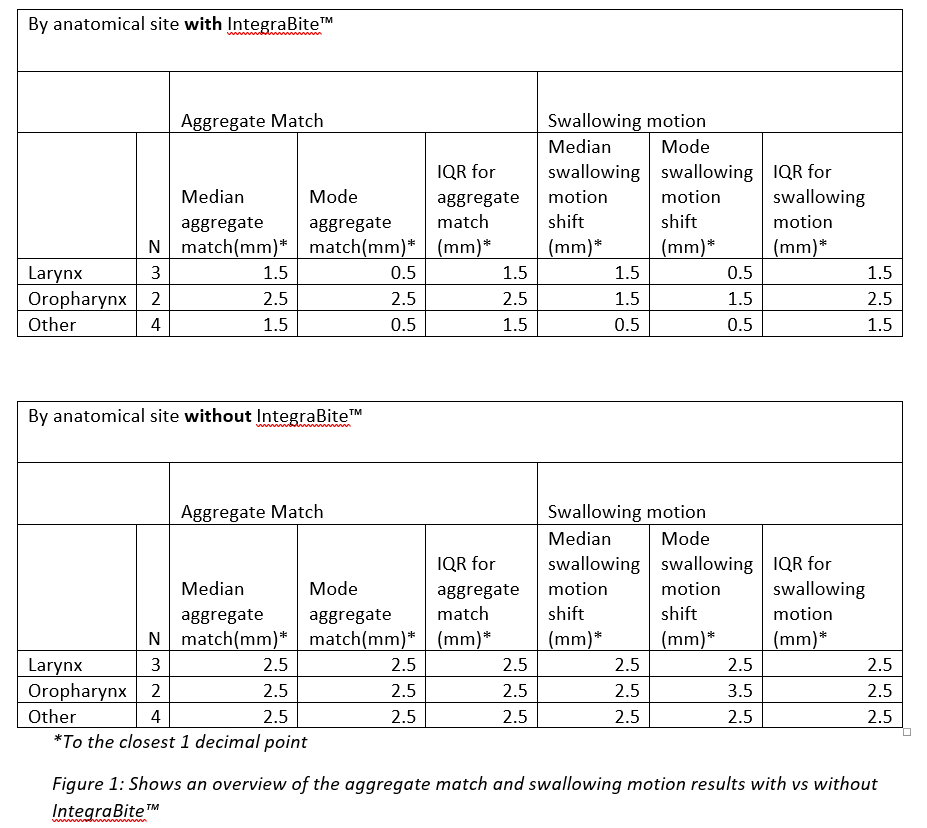Using the IntegraBite™ for improved setup and reduced swallowing motion in head and neck treatment
Roeum Butt,
United Kingdom
PO-2251
Abstract
Using the IntegraBite™ for improved setup and reduced swallowing motion in head and neck treatment
Authors: Roeum Butt1, Aisling Krishnan1, Daniel Quince2, Kevin Chiu3, Daniel Megias1
1Mount Vernon Cancer Centre, Radiotherapy, London, United Kingdom; 2Mount Vernon Cancer Centre, Radiotherapy , London, United Kingdom; 3Mount Vernon Cancer Centre, Oncology, London, United Kingdom
Show Affiliations
Hide Affiliations
Purpose or Objective
The purpose of this study was to quantify the impact of the IntegraBite™ on set-up error for a range of patients receiving radiotherapy to the Head and Neck region. Inter-fraction setup error was evaluated measuring:
• Set-up error in relation to the bony anatomy
• Position of hypopharynx structures
Material and Methods
Two cohorts of 9 patients receiving radical radiotherapy, verified daily using either kV paired images or Cone Beam Computed Tomography (CBCT), were evaluated. 230 treatment verification images in total were reviewed. One cohort consisted of patients planned with IntegraBite™ and the other patients planned without IntegraBite™ or mouthbite in-situ.
The treatment verification image match shifts applied relative to bone were used to determine the set-up error, with the aggregate match value representing the residual error in bony match.
The position of the hypopharynx structures as an indicator of swallowing motion compared the values between the bony match for setup position and the thyroid cartilage.
The results of the two cohorts were compared using descriptive statistics to evaluate the difference in setup error.
Results
Generally, the IntegraBite™ provided an improvement in the aggregate match and swallowing motion for the larynx and other population with a median result of 1.5mm with vs 2.5mm without. However, the oropharynx population had similar results with vs without the IntegraBite™.
The IQR suggest good correspondence with the median values reported suggesting good reliability of the results.
An overview of the results can be found in figure 1.
Conclusion
These results suggest a potential set-up benefit using the IntegraBite™ to reduce setup errors both in relation to bony anatomy and the hypopharynx. Initial results suggest the potential benefit is not as prominent for patients receiving radiotherapy to the oropharynx.
Further work is needed to determine the potential for reduced margins, in particular patients receiving radiotherapy to the larynx where larger margins are often used to account for inter fractional variations as a result of swallowing.